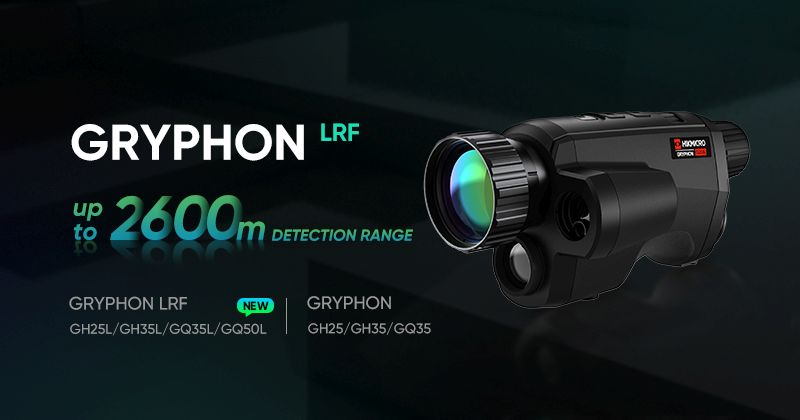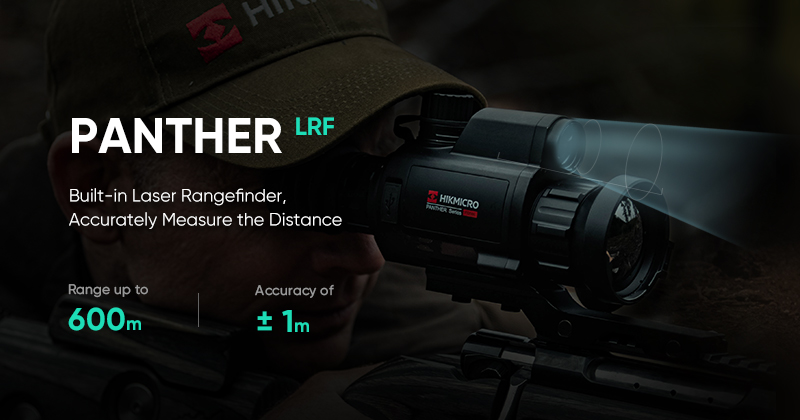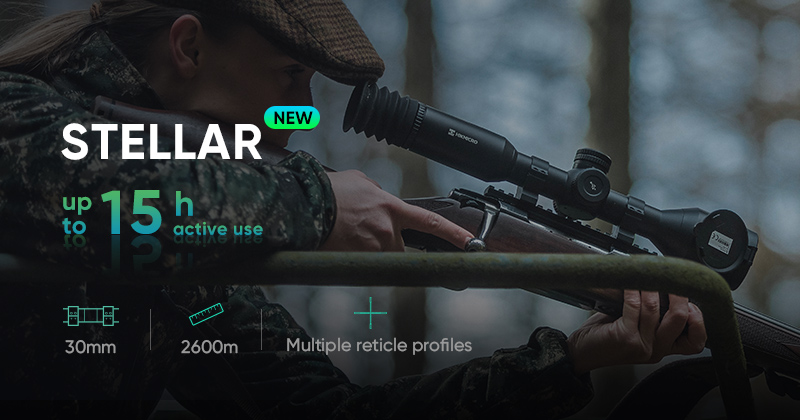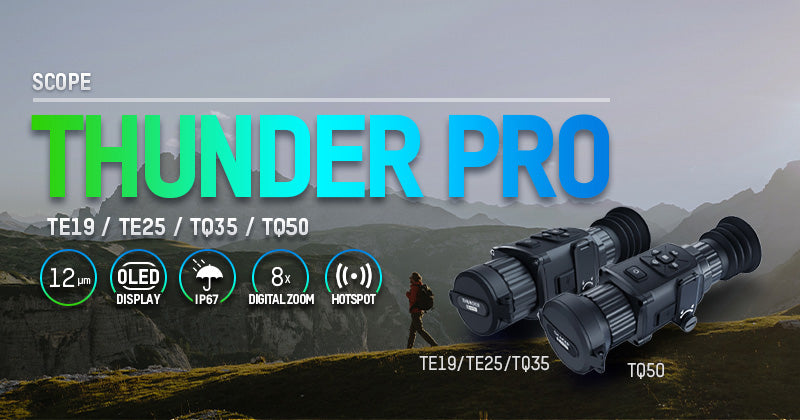Questions?
What's the difference between the LYNX and the OWL thermals?
The LYNX series is a more smaller/lighter compact thermal, ideally suited for carrying on-person and where size and weight are important considerations. The LYNX PRO models use a 12 micron pixel sensor. The lower the micron number the more efficient the scope is. What that means is that a thermal can have more magnification with the same lens size if it has a lower micron sensor. 12 Microns are newer to the market, and can have more instability, where you may need to use the DPC function more often. LYNX models range between 6mm lens and 25mm lens sizes.
The OWL models while physically larger, are easier and more comfortable for larger hands or unsteady hands. The larger screen size means its easier to look through for longer periods and also help with identification due to a larger display. The OWL range is also available in 25-35mm lens size.
How much relevance do I place on lens size for my needs?
What is the importance of F rating on the lens and the NETD value?
These two factors are arguably more critical than lens size. F rating is a measure of the quality of the lens itself. HIK thermals have F1.0 rated lenses. This speaks to the fine manufacturing technology, and to give an example, an F1.0 lens will see 44% more heat than an F1.2 rated lens which is what many competing brands use.
NETD is a measure of the sensitivity of the thermal sensor itself. With HIK’s sub 35mK rating, users can expect much more heat information to make up the image than say for a thermal with a 50mK NETD value. This leads to more detail, more definition and better clarity when the conditions get tough.
Can thermals see through bush and scrub?
A thermal is a very useful tool for detecting heat off animals that permeates from behind cover, such as bush and scrub. You will find sign in places where normal vision would see absolutely nothing. It is very surprising how many animals are missed from behind cover like this. ALWAYS properly identify a target before taking your shot.
How does the 35mm THUNDER scope attach to my day scope?
The THUNDER 35mm uses a clip on attachment which has a very fine tolerance machined-fit to line up at the front of your day scope. The clip on attachment is included in all THUNDER 35mm thermal scopes. Rubber packing strips help ensure a perfect fit is obtained. Use the least amount of rubber required to obtain the fit. Ensure the clip on internal surface is butted up perfectly against the leading edge rim of your day scope. The light weight and small size of the THUNDER scope ensures you will still achieve good balance on your rifle. To detach your THIUNDER, simply un do the locking ring and turn your THUNDER 1/4 turn to disengage it from the mounting. When your THUNDER 35mm is attached as a clip on, the software recognises this and adjusts the menu features to cater for screen calibration mode if required.
Does the THUNDER scope charge via the USB port?
No, the THUNDER scope is designed with removable battery ports and therefore does not charge via the USB port. Batteries should be removed and charged eternally in the charger provided, or any suitable charger. DO NOT plug in the USB cable while the batteries are mounted in the THUNDER. Please use the USB port only as an interface to download images or videos, or to update software. The reason for this is that non-rechargable batteries can be used with the THUNDER and these must not receive charge current or damage to them and the unit may result.
Should I look at very hot things through my thermal optics? Why not?
No, it is not a good idea to point your thermal at very hot objects such as fireplaces, bonfires, the sun, heat coils etc. The intense heat can damage the sensitivity of the unit and may result in pixilation of the display. There is a restore mode built in that can restore and rebuild the pixels however long term damage to the sensor will be a result of pointing it at very high heat sources while switched on.
The eyepiece end of my thermal has a little fog under the glass after using it, why is this?
This is usually the result of a small amount of airborne humidity condensing on the glass when the unit is hot from use, and then exposed to cold ambient temps that meet the glass piece. Exactly the same as a car windshield or window. This small amount of condensation will not harm the unit and it will dry out.
We suggest turning off the unit while it is kept in a zip pocket, or a pouch, when not in use. When it is on, and in a warm insulated place, can cause the unit to heat up more than usual and just the tiniest amount of moisture in the unit will present itself. It will also be more likely to occur if the thermal is stored vertically, when the internal warmth has the chance to rise to the eyepiece end of the unit.
Why cant a thermal optic see through glass or windows?
A thermal relies on seeing heat, not light. Therefore any surface that insulates will not allow heat through enough to be picked up. It doesn’t matter if the surface is translucent or not (in the case of glass). Double glazed or thick glass in particular is near impenetrable to low level airborne heat signals.
What is the returns policy?
In the unlikely event that the goods supplied are not what you expected, please follow the Returns Instructions on this page. You must return them to us in an unused and unsoiled condition, complete with their original packaging within 14 days of receipt. Please be aware that items can only be returned for an exchange/refund if they are unused and in their original packaging and have all of the barcode tags intact.
What are the shipping options?
We ship with Australia Post with pricing calculated at checkout.
When will I receive my order?
We ship all orders within 24-48 hours of receiving your orders.
Please note delays with AusPost due to COVID-19 restrictions.






